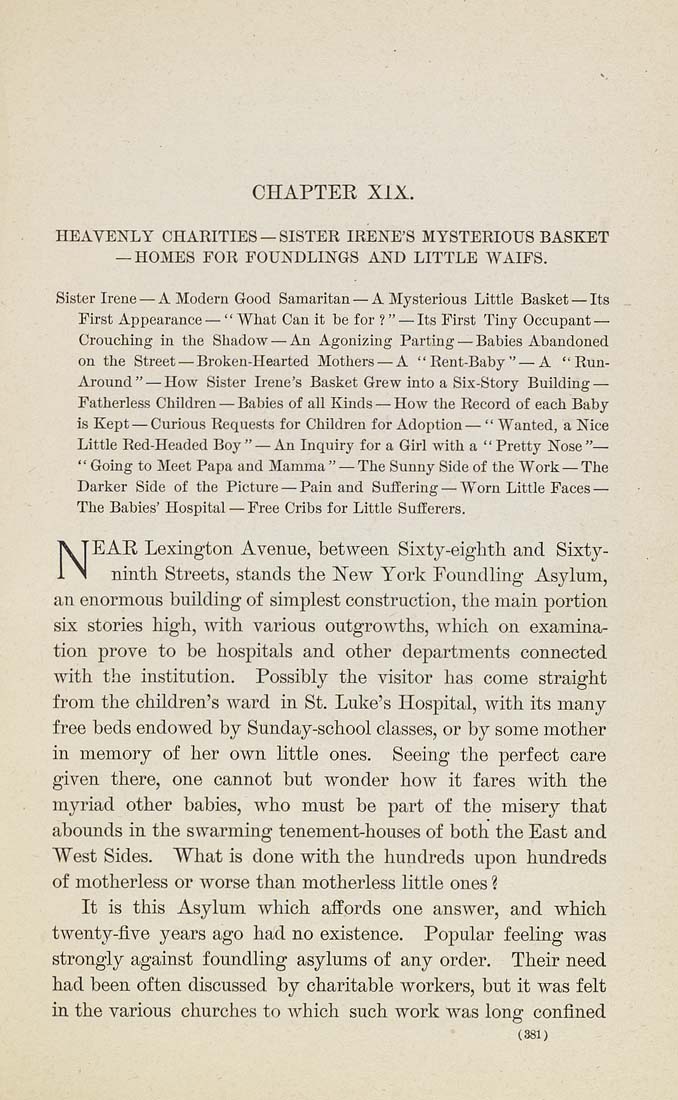CHAPTEE XIX.
HEAVENLY CHARITIES — SISTER IRENE'S MYSTERIOUS BASKET
— HOMES FOR FOUNDLINGS AND LITTLE WAIFS.
Sister Irene — A Modern Good Samaritan — A Mysterious Little Basket — Its
First Appearance — " What Can it be f or ? " — Its First Tiny Occupant —
Crouching in the Shadow — An Agonizing Parting — Babies Abandoned
on the Street — Broken-Hearted Mothers — A "Rent-Baby"—A "Run-
Around"— How Sister Irene's Basket Grew into a Six-Story Building —
Fatherless Children — Babies of all Kinds — How the Record of each Baby
is Kept — Curious Requests for Children for Adoption— " Wanted, a Nice
Little Red-Headed Boy" — An Inquiry for a Girl with a "Pretty Nose"—
" Going to Meet Papa and Mamma" — The Sunny Side of the Work — The
Darker Side of the Picture — Pain and Suffering — Worn Little Faces —
The Babies' Hospital — Free Cribs for Little Sufferers.
NEAE Lexington Avenue, between Sixty-eighth and Sixty-
ninth Streets, stands the New York Foundling Asylum,
an enormous building of simplest construction, the main portion
six stories high, with various outgroY'ths, Y'hich on examina¬
tion prove to be hospitals and other departments connected
with the institution. Possibly the visitor has come straight
from the children's ward in St. Luke's Hospital, with its many
free beds endowed by Sunday-school classes, or by some mother
in memory of her own little ones. Seeing the perfect care
given there, one cannot but wonder how it fares with the
myriad other babies, who must be part of the misery that
abounds in the swarming tenement-houses of both the East and
West Sides. What is done with the hundreds upon hundreds
of motherless or worse than motherless little ones ?
It is this Asylum which affords one answer, and which
twenty-five years ago had no existence. Popular feeling was
strongly against foundling asylums of any order. Their need
had been often discussed by charitable workers, but it was felt
in the various churches to which such work Y'as long confined
(381)
|








